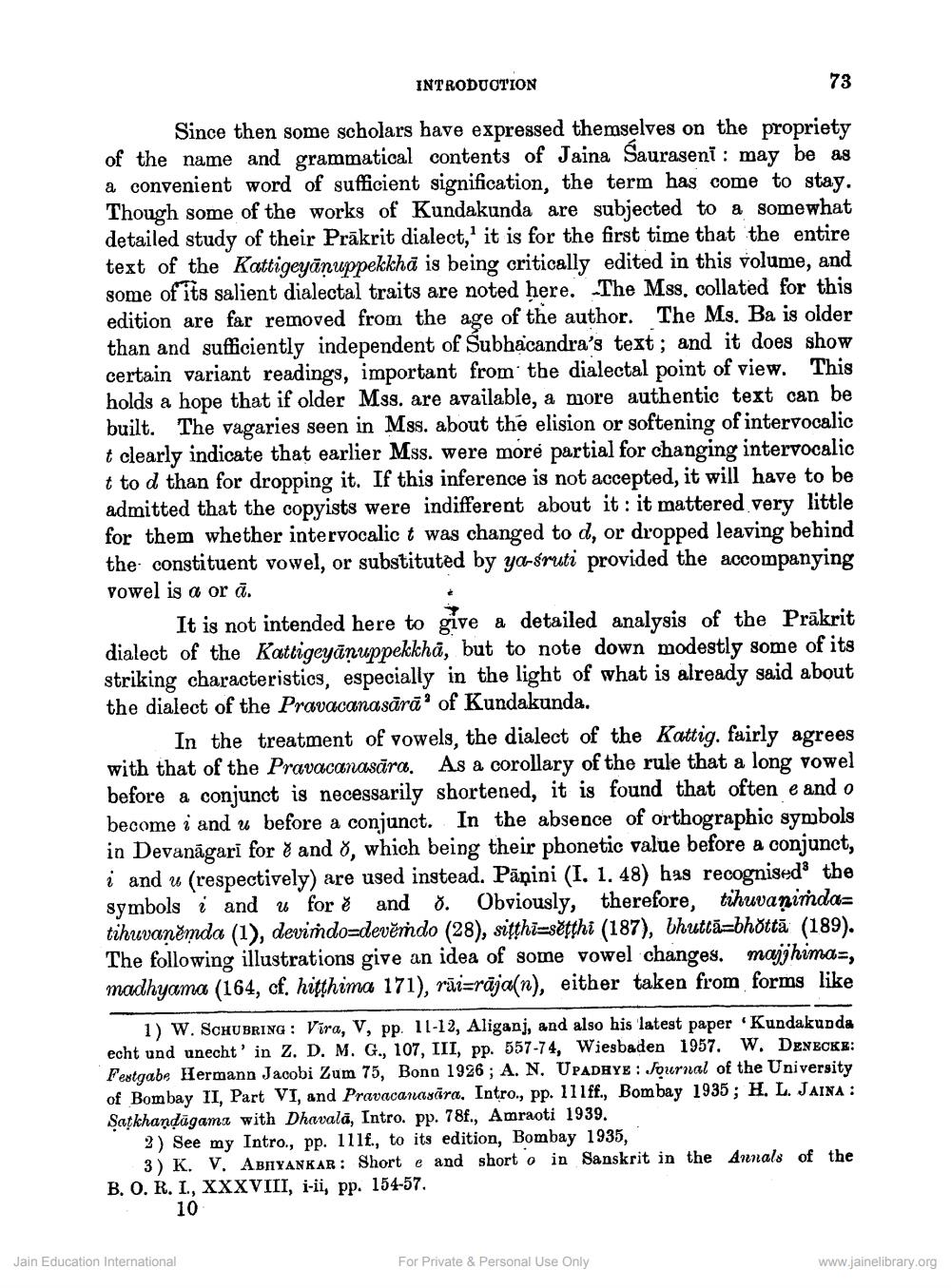________________
INTRODUCTION
73
Since then some scholars have expressed themselves on the propriety of the name and grammatical contents of Jaina Sauraseni : may be as a convenient word of sufficient signification, the term has come to stay. Though some of the works of Kundakunda are subjected to a somewhat
led study of their Prākrit dialect, it is for the first time that the entire text of the Kattigeyānuppekkha is being critically edited in this volume, and some of its salient dialectal traits are noted here. The Mss. collated for this edition are far removed from the age of the author. The Ms. Ba is older than and sufficiently independent of Subhaicandra's text; and it does show certain variant readings, important from the dialectal point of view. This holds a hope that if older Mss. are available, a more authentic text can be built. The vagaries seen in Mss. about the elision or softening of intervocalic t clearly indicate that earlier Mss. were more partial for changing intervocalic t to d than for dropping it. If this inference is not accepted, it will have to be admitted that the copyists were indifferent about it: it mattered very little for them whether intervocalic t was changed to d, or dropped leaving behind the constituent vowel, or substituted by ya-sruti provided the accompanying vowel is a or a.
It is not intended here to give a detailed analysis of the Prākrit dialect of the Kattigeyānuppekkhå, but to note down modestly some of its striking characteristics, especially in the light of what is already said about the dialect of the Pravacanasārā' of Kundakunda.
In the treatment of vowels, the dialect of the Kattig. fairly agrees with that of the Pravacanasāra. As a corollary of the rule that a long vowel before a conjunct is necessarily shortened, it is found that often e and o become i and 4 before a conjunct. In the absence of orthographic symbols in Devanāgarī for ě and 0, which being their phonetic value before a conjunct, i and u (respectively) are used instead. Pāņini (I. 1. 48) has recognised the symbols i and U for $ and 0. Obviously, therefore, tihuvanimdatihuvaněmda (1), deviņdo=devěrdo (28), sitthi=sēţthi (187), bhuttă=bhottā (189). The following illustrations give an idea of some vowel changes. majjhima-, madhyama (164, cf, hitthima 171), räi=rājain), either taken from forms like
unda,
1) W. SCHUBRING : Vira, V, pp. 11-12, Aliganj, and also his latest paper 'Kundakunda echt und unecht' in Z. D. M. G., 107, III, pp. 557-74, Wiesbaden 1957. W. DENECKE: Festgabe Hermann Jacobi Zum 75, Bonn 1926; A. N. UPADHYE : Journal of the University of Bombay II, Part VI, and Pravacanasāra. Intro., pp. 111ff., Bombay 1935; H. L. JAINA: Satkhandāgama with Dhavală, Intro. pp. 78f., Amraoti 1939.
3) See my Intro., pp. 111f, to its edition, Bombay 1935,
3) K. V. ABHIYANKAR: Short e and short o in Sanskrit in the Annals of the B. O. R. I., XXXVIII, i-ii, pp. 154-57.
10
of Bombay mann Jacobi Zum G., 107, III. Aliganj, and alon
Jain Education International
For Private & Personal Use Only
www.jainelibrary.org




